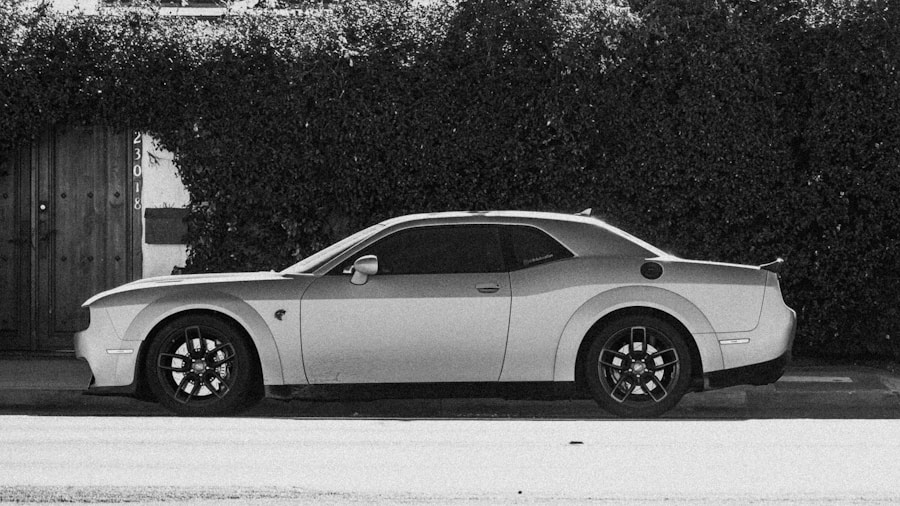You may have noticed that Godzilla, the iconic kaiju, has made a significant resurgence in popular culture. This towering creature, first introduced to audiences in 1954, has become a symbol of resilience and power, captivating generations of fans. The recent films and collaborations have reignited interest in this legendary monster, proving that Godzilla is not just a relic of the past but a vibrant part of contemporary entertainment.
You might find it fascinating how this creature, born from the fears of nuclear devastation, has evolved into a beloved figure that resonates with audiences worldwide. The enduring popularity of Godzilla can be attributed to its ability to adapt and reflect societal concerns. As you watch the latest films, you may notice how they tackle themes such as environmental destruction, corporate greed, and the consequences of humanity’s actions.
This relevance keeps Godzilla fresh and relatable, allowing new audiences to connect with the character while still honoring its rich history. The blend of nostalgia and modern storytelling ensures that Godzilla remains a powerful force in cinema, captivating both old fans and newcomers alike.
Key Takeaways
- Godzilla’s enduring popularity is a testament to its iconic status in pop culture.
- The origins of Godzilla can be traced back to Japanese cinema, but it has since become a global phenomenon.
- From rubber suit to CGI, Godzilla has evolved with advancements in technology and special effects.
- Nostalgia for the original Godzilla films remains strong, with fans revisiting the classics.
- Godzilla’s impact on pop culture extends to merchandise, video games, and more, showcasing its lasting influence.
Exploring the Origins of Godzilla: From Japanese Cinema to Global Phenomenon
The Birth of a Monster
The original film, “Gojira,” was released in 1954 and served as a poignant commentary on the devastation caused by atomic bombs. As you explore this film, you may find that it is not merely a monster movie but a profound reflection on human suffering and the consequences of technological advancement.
From Japan to the World
As Godzilla gained popularity in Japan, it quickly transcended its national boundaries. You might be intrigued to learn how the character was reimagined for Western audiences, leading to a series of adaptations that further solidified its status as a global icon.
A Global Phenomenon
The 1998 American remake, while controversial among fans, introduced Godzilla to a new generation and sparked interest in the franchise outside Japan. This evolution from a localized phenomenon to an international sensation showcases the universal themes embedded in Godzilla’s narrative, making it relatable to diverse audiences.
The Evolution of Godzilla: From Rubber Suit to CGI

When you think of Godzilla, you might picture the impressive visual effects that bring this colossal creature to life today. However, it’s essential to recognize the journey from the early days of rubber suits to the cutting-edge CGI technology used in modern films. The original Godzilla was portrayed by actor Haruo Nakajima in a suit that weighed over 200 pounds.
As you watch those classic films, you may appreciate the creativity and ingenuity that went into creating such a memorable character with limited resources. The transition to CGI has allowed filmmakers to push the boundaries of what is possible in monster movies. You may find it fascinating how advancements in technology have enabled more dynamic action sequences and realistic portrayals of Godzilla’s immense size and power.
However, this evolution also raises questions about the balance between practical effects and digital enhancements. While CGI offers stunning visuals, there is something undeniably charming about the tactile nature of the original films that resonates with fans who appreciate the artistry behind practical effects.
Nostalgia for the Classics: Revisiting the Original Godzilla Films
| Film Title | Release Year | Director | Box Office |
|---|---|---|---|
| Godzilla (1954) | 1954 | Ishirō Honda | 2.25 million |
| Godzilla Raids Again (1955) | 1955 | Motoyoshi Oda | Not available |
| King Kong vs. Godzilla (1962) | 1962 | Ishirō Honda | Not available |
| Mothra vs. Godzilla (1964) | 1964 | Ishirō Honda | Not available |
As you revisit the original Godzilla films, you may find yourself enveloped in a sense of nostalgia. These movies are not just entertainment; they are cultural artifacts that capture the spirit of their time. The black-and-white cinematography, combined with haunting soundtracks, creates an atmosphere that transports you back to an era when cinema was still discovering its potential.
You might feel a connection to the filmmakers who poured their hearts into these projects, using limited resources to craft stories that would leave a lasting impact. The themes explored in these classic films remain relevant today. As you watch Godzilla wreak havoc on cities, you may reflect on humanity’s relationship with nature and technology.
The original films often served as cautionary tales about the consequences of our actions, urging viewers to consider the fragility of life in the face of overwhelming power. This timeless message continues to resonate with audiences, ensuring that these classics remain cherished pieces of cinematic history.
Godzilla’s Impact on Pop Culture: Merchandise, Video Games, and More
Godzilla’s influence extends far beyond the silver screen; it has permeated various aspects of pop culture that you might encounter daily.
You may have seen Godzilla-themed items in stores or online, showcasing how deeply ingrained this character is in our collective consciousness.
The sheer variety of products available speaks to Godzilla’s status as a cultural icon that transcends generations. Video games have also played a significant role in expanding Godzilla’s reach. You might recall playing titles that allow you to control this colossal creature as it battles other monsters or wreaks havoc on cities.
These games not only provide entertainment but also serve as a way for fans to engage with the franchise on a more interactive level. As you explore these various forms of media, you’ll see how Godzilla has become a versatile character capable of adapting to different formats while maintaining its core identity.
The Influence of Godzilla on Modern Monster Movies

The Resurgence of Kaiju Films
The recent resurgence of kaiju films can be attributed to Godzilla’s enduring legacy. Movies like “Pacific Rim” and “Kong: Skull Island” pay homage to the genre while introducing new elements that keep it fresh. These films often explore themes of humanity’s struggle against nature or otherworldly forces, echoing the core messages found in Godzilla’s story.
A New Era of Monster Movies
As modern interpretations of monster movies continue to emerge, they honor the past while pushing the boundaries of what the genre can achieve. Filmmakers are finding new ways to tell stories that are both nostalgic and innovative, ensuring the continued relevance of monster movies in popular culture.
A Legacy That Continues to Inspire
As you engage with these modern interpretations, you’ll likely appreciate how they build upon the foundation laid by Godzilla. The King of the Monsters may have started it all, but its influence can be seen in the many monster movies that have followed, and will likely continue to inspire filmmakers for generations to come.
Reimagining Godzilla: The 21st Century Adaptations
In the 21st century, Godzilla has undergone several reimaginings that reflect changing societal values and cinematic trends. You may have noticed how recent adaptations have shifted focus from pure destruction to more nuanced storytelling that delves into the character’s motivations and relationships with humans. The 2014 film directed by Gareth Edwards marked a turning point for the franchise, emphasizing suspense and character development alongside thrilling action sequences.
As you explore these adaptations, you’ll see how filmmakers have embraced diverse storytelling techniques while remaining true to Godzilla’s essence. The 2019 film “Godzilla: King of the Monsters” expanded on this approach by introducing other iconic kaiju and exploring their interconnectedness within a shared universe. This evolution demonstrates how Godzilla continues to adapt to contemporary storytelling trends while maintaining its status as a beloved cultural icon.
Godzilla’s Legacy: Inspiring Generations of Fans and Filmmakers
Godzilla’s legacy is not just about its cinematic achievements; it is also about the impact it has had on fans and filmmakers alike. As you reflect on your own experiences with this iconic monster, you may recognize how it has inspired creativity and passion across generations. From fan art to cosplay, Godzilla has become a canvas for self-expression that allows fans to connect with one another through their shared love for this colossal creature.
Filmmakers around the world have also drawn inspiration from Godzilla’s legacy, using its themes and aesthetics as a foundation for their own stories. You might find it fascinating how directors like Guillermo del Toro have cited Godzilla as an influence on their work, showcasing its far-reaching impact on cinema as a whole. As you continue to engage with this enduring franchise, you’ll likely appreciate how Godzilla has not only shaped popular culture but also fostered a sense of community among fans and creators alike.
In conclusion, your journey through the world of Godzilla reveals an enduring icon whose impact transcends time and borders. From its origins in Japanese cinema to its status as a global phenomenon, Godzilla continues to evolve while remaining relevant in today’s society. As you explore its rich history and cultural significance, you’ll find that this legendary kaiju is more than just a monster; it is a symbol of resilience, creativity, and connection that inspires generations to come.
If you’re a fan of vintage Godzilla, you may be interested in checking out this article on a clash of titans: is Godzilla more powerful than Superman? This thought-provoking piece delves into the power dynamics between two iconic characters and is sure to spark some interesting discussions among fans.
FAQs
What is vintage Godzilla?
Vintage Godzilla refers to the original Godzilla films and merchandise that were produced in the 1950s, 60s, and 70s. These items are considered collectible and are highly sought after by fans of the franchise.
When was the first vintage Godzilla film released?
The first vintage Godzilla film, titled “Godzilla,” was released in 1954 in Japan. It was later released in the United States in 1956 under the title “Godzilla, King of the Monsters!”
What are some examples of vintage Godzilla merchandise?
Vintage Godzilla merchandise includes items such as action figures, posters, comic books, trading cards, and other promotional materials from the original films.
Are vintage Godzilla items valuable?
Yes, vintage Godzilla items can be quite valuable, especially if they are in good condition and are rare or limited edition. Collectors often seek out vintage Godzilla merchandise to add to their collections.
How can I authenticate vintage Godzilla items?
To authenticate vintage Godzilla items, it is important to look for official markings, labels, or packaging that indicate the item’s authenticity. Additionally, working with reputable sellers and collectors can help ensure the authenticity of vintage Godzilla merchandise.
